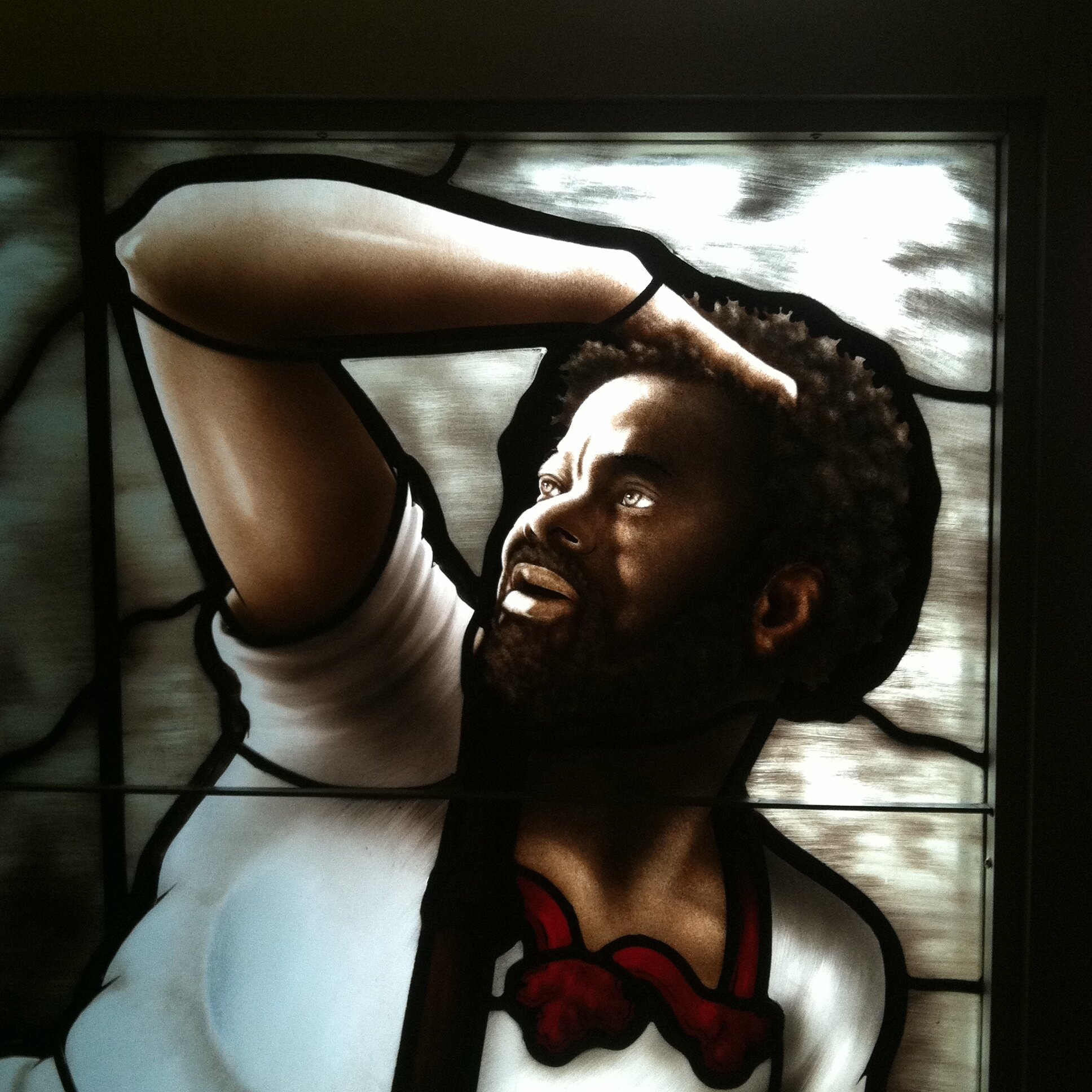
st. Paul the apostle church
Environmental Graphics, Stained Glass
overview
35’ x 10’ stained glass window for St. Paul the Apostle Church in New Orleans East, LA, depicting the conversion of Saul into the apostle Paul.
project specs
Timeframe: 6 months
Personnel: Solo — freelance commission through Attenfofer’s Stained Glass
Roles / Skills: Client interaction, Design, Illustration, Painting, Airbrush, Fabrication, Installation
Tools: Paper, Glass, Glass Cutter, Pigment, Airbrush, Kiln, Lead Came, Soldering Iron
challenge
There were two main challenges to consider in the execution of this project. (1) Inside the church, there is a choir loft that cuts the length of the window in half, and (2) outside there is a massive statue, 3/4 of the height that sits directly in front of the window casting a dense shadow visible from the inside.
solution
I used the choir loft and the statue’s shadow to my advantage. I created a scene that shifts in tone from dark to light, using the large shadow cast by the statue in the center of the piece to create dramatically dappled and refracted light, accentuating the emotional resonance, further.
inspiration
As is the case with most biblical stories, the conversion of Saul has been depicted by artists thousands of times throughout the centuries, in many different ways.
I was most attracted to the singular figure and a horse traveling in solitude before this life-altering momentous event. It adds yet another level of emotional complexity to the visual story.
concept + process
I used a cascading gradient effect, creating a dramatic shift in light, using the choir loft as a natural cloud break. Below is the initial sketch for the client as well as a rendering of what it might like in the church.
Initial sketch with interior rendering
full size cartoon
Once the client signs off on the initial idea and composition, it moves on to the full-size cartoon rendering phase. This becomes my underpainting of sorts, which I place under the glass to guide my first few layers of paint. This last phase still needs client approval before any glass starts getting cut.
People of color make up the majority of the congregation of St. Paul the Apostle and New Orleans in general. It was important to me while designing, that the finished piece would represent the diversity of the population. Our client for this project is the priest in residence at St. Paul, who is a native of West Africa. After presenting the final drawing for approval the only thing I was asked to change was the figure’s likeness to that of the priest, which ended up working out successfully. It added a personal touch and still gave the parishioners a face they could see themselves in.
Bottom third of full scale drawing
painting
Painting on glass requires different techniques than traditional painting on a canvas. Whereas in traditional painting you apply layers of pigment providing depth and shadow, eventually creating the illusion of light. The opposite rule applies to glass painting. The pigment is applied over the entire piece and then strategically removed to reveal light, eventually creating the illusion of depth and shadow.
There are other factors to consider as well. Each piece of glass gets wrapped in lead came, so one must account for the width of that metal. As you can see in the example below the figure has thick black outlines locking in the image. When finally assembled the black lines represent the lead came surrounding it, which essentially disappears when viewing.
Each layer of pigment applied to the glass must get fired at high temperatures before another layer can be applied. People have been trying to get around that fact for centuries. There are toxic ways of dealing with it, such as using oils as binding agents to hold them to the glass while another layer is applied. I do not enjoy this method because the fumes can be unbearable, it is inherently messy and I prefer to mix my paints with water only.
I employed a new technique for this project in hopes of quickening the process, by airbrushing most of the work instead of the traditional method of applying and controlling the paint with a classic brush. This would significantly reduce the amount of firing I would need to do without losing detail and depth. This is also an extremely risky undertaking. Any mistake could potentially set me back dozens of hours or even days of work. The learning curve was tricky at first but once I felt comfortable with the airbrush, I could develop a technique and system that could carry throughout the project.
Final Piece
Figure and horse are life-size







